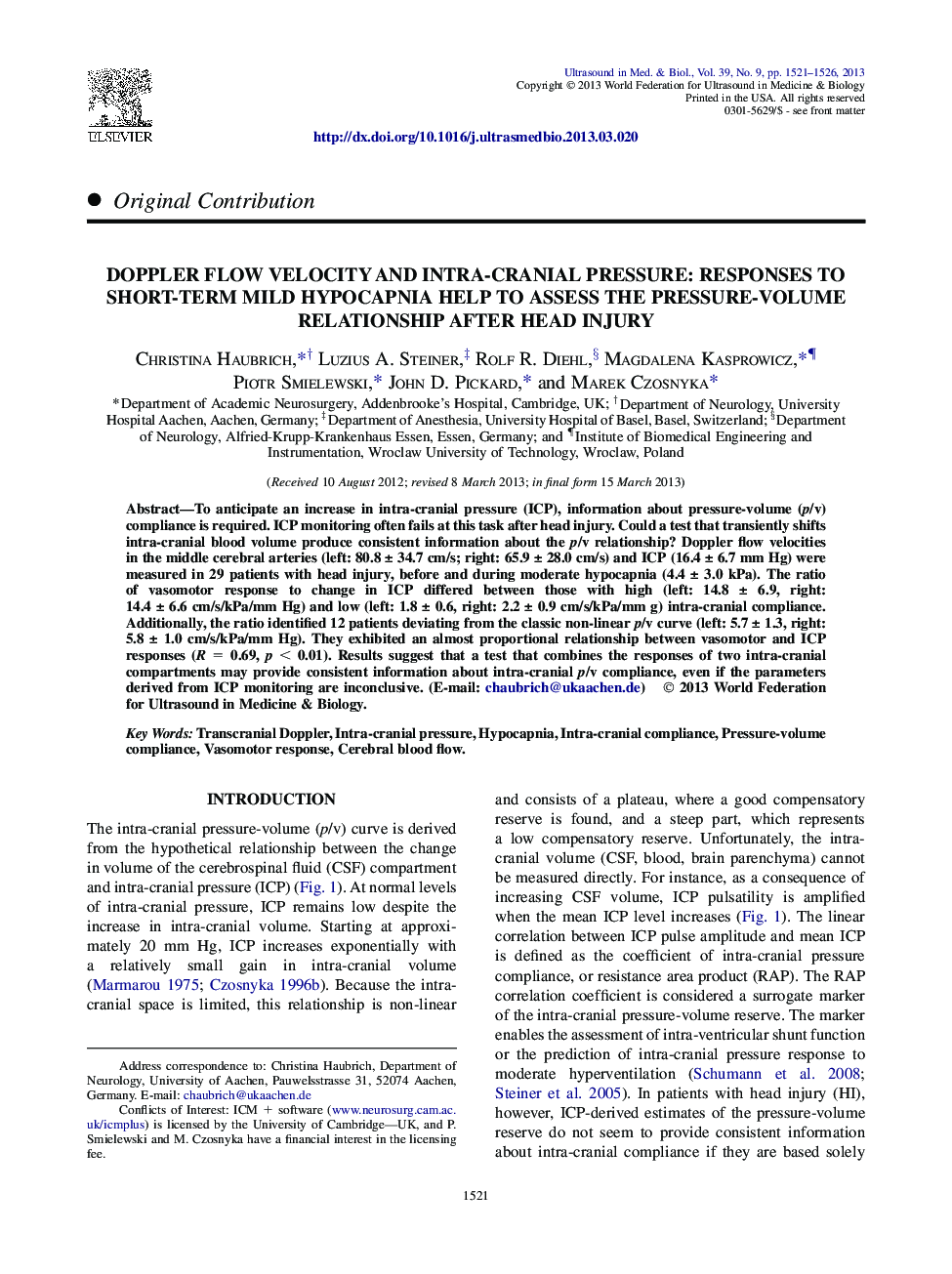| Article ID | Journal | Published Year | Pages | File Type |
|---|---|---|---|---|
| 10691849 | Ultrasound in Medicine & Biology | 2013 | 6 Pages |
Abstract
To anticipate an increase in intra-cranial pressure (ICP), information about pressure-volume (p/v) compliance is required. ICP monitoring often fails at this task after head injury. Could a test that transiently shifts intra-cranial blood volume produce consistent information about the p/v relationship? Doppler flow velocities in the middle cerebral arteries (left: 80.8 ± 34.7 cm/s; right: 65.9 ± 28.0 cm/s) and ICP (16.4 ± 6.7 mm Hg) were measured in 29 patients with head injury, before and during moderate hypocapnia (4.4 ± 3.0 kPa). The ratio of vasomotor response to change in ICP differed between those with high (left: 14.8 ± 6.9, right: 14.4 ± 6.6 cm/s/kPa/mm Hg) and low (left: 1.8 ± 0.6, right: 2.2 ± 0.9 cm/s/kPa/mm g) intra-cranial compliance. Additionally, the ratio identified 12 patients deviating from the classic non-linear p/v curve (left: 5.7 ± 1.3, right: 5.8 ± 1.0 cm/s/kPa/mm Hg). They exhibited an almost proportional relationship between vasomotor and ICP responses (R = 0.69, p < 0.01). Results suggest that a test that combines the responses of two intra-cranial compartments may provide consistent information about intra-cranial p/v compliance, even if the parameters derived from ICP monitoring are inconclusive.
Related Topics
Physical Sciences and Engineering
Physics and Astronomy
Acoustics and Ultrasonics
Authors
Christina Haubrich, Luzius A. Steiner, Rolf R. Diehl, Magdalena Kasprowicz, Piotr Smielewski, John D. Pickard, Marek Czosnyka,
